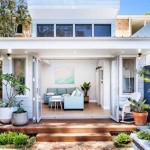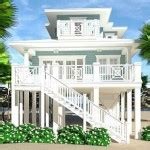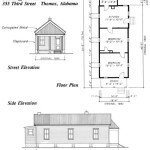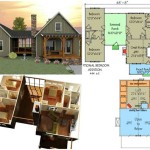Victorian House Plans are detailed drawings that provide a comprehensive blueprint for the construction of Victorian-style houses. These plans include specifications for every aspect of the house, from the foundation to the roof, and are essential for ensuring the structural integrity and aesthetic appeal of the final building.
Victorian House Plans are characterized by their intricate detailing, high ceilings, and bay windows. They were first developed in the mid-19th century by architects such as Andrew Jackson Downing and Alexander Jackson Davis, and quickly became popular due to their combination of comfort and style. Today, Victorian House Plans continue to be used by architects and homeowners who appreciate their classic beauty and timeless appeal.
The main body of this article will explore the history, design principles, and modern applications of Victorian House Plans. We will also provide tips on how to choose the right plan for your needs, and how to work with an architect to create a custom design.
Victorian House Plans are characterized by a number of important features, including:
- Intricate detailing
- High ceilings
- Bay windows
- Asymmetrical facades
- Wrap-around porches
- Decorative millwork
- Stained glass windows
- Turrets and towers
These features combine to create a unique and visually appealing style that is still popular today.
Intricate detailing
One of the most striking features of Victorian House Plans is their intricate detailing. This detailing can be seen in every aspect of the house, from the exterior to the interior. On the exterior, Victorian houses are often adorned with gingerbread trim, decorative moldings, and stained glass windows. The roofs are often complex, with multiple gables and dormers. The porches are often wrapped around the house, and feature elaborate columns and railings.
Inside, Victorian houses are just as detailed as they are on the outside. The walls are often covered in wallpaper or fabric, and the ceilings are often decorated with moldings and medallions. The fireplaces are often made of marble or tile, and the mantles are often intricately carved. The windows are often large and feature stained glass or leaded glass.
The intricate detailing of Victorian House Plans is a reflection of the Victorian era’s love of beauty and craftsmanship. Victorians believed that every detail, no matter how small, was important. This attention to detail is what makes Victorian houses so unique and visually appealing.
Today, Victorian House Plans continue to be popular with homeowners who appreciate their classic beauty and timeless appeal. While some modern Victorian houses may not be as elaborately detailed as their historical counterparts, they still retain many of the same design elements, such as bay windows, wrap-around porches, and decorative trim.
The intricate detailing of Victorian House Plans is a key part of their overall appeal. These details add character and charm to the home, and they can also help to increase its value. If you are considering building a Victorian house, be sure to pay close attention to the details. The more detailed your house is, the more beautiful and unique it will be.
High ceilings
Another characteristic feature of Victorian House Plans is their high ceilings. Ceilings in Victorian houses are typically 10-12 feet high, and in some cases, they can be even higher. This creates a sense of spaciousness and grandeur, and it also helps to improve air circulation. In addition, high ceilings can make a room feel more inviting and comfortable.
There are several reasons why Victorian architects chose to use high ceilings in their designs. First, high ceilings were a way to show off the wealth and status of the homeowner. Second, high ceilings helped to keep the house cool in the summer months. Third, high ceilings improved the acoustics of the house, making it easier to hear conversations and music.
Today, high ceilings are still a popular feature in many homes. They can add a sense of luxury and sophistication to any room, and they can also make a small room feel larger. If you are considering building a Victorian house, be sure to consider the benefits of high ceilings.
Benefits of high ceilings
There are many benefits to having high ceilings in your home. Some of the benefits include:
- Increased sense of space: High ceilings make a room feel more spacious and airy. This is especially beneficial in small rooms, as it can help to make them feel larger.
- Improved air circulation: High ceilings allow for better air circulation, which can help to keep your home cooler in the summer months.
- Enhanced acoustics: High ceilings improve the acoustics of a room, making it easier to hear conversations and music.
- More natural light: High ceilings allow for more natural light to enter the room, which can make it feel more inviting and comfortable.
- Increased property value: High ceilings are a desirable feature in many homes, and they can help to increase the value of your property.
If you are considering building a Victorian house, be sure to consider the benefits of high ceilings. They can add a sense of luxury and sophistication to any room, and they can also make your home more comfortable and enjoyable.
Bay windows
Bay windows are another characteristic feature of Victorian House Plans. Bay windows are essentially windows that project outward from the wall of the house, creating a small alcove. They are typically made up of three or more windows that are joined together at an angle. Bay windows can be found on the front, side, or back of a house, and they can be used to create a variety of different looks.
There are several reasons why Victorian architects chose to use bay windows in their designs. First, bay windows provide more natural light and ventilation than traditional windows. Second, bay windows can be used to create a more spacious and inviting space. Third, bay windows can add a touch of architectural interest to a home.
Today, bay windows are still a popular feature in many homes. They can add a sense of charm and character to any room, and they can also provide a number of practical benefits. If you are considering building a Victorian house, be sure to consider the benefits of bay windows.
Benefits of bay windows
There are many benefits to having bay windows in your home. Some of the benefits include:
- Increased natural light: Bay windows allow for more natural light to enter the room, which can make it feel more inviting and comfortable.
- Improved ventilation: Bay windows can be opened to allow for more ventilation, which can help to keep your home cooler in the summer months and reduce the risk of condensation in the winter months.
- Increased space: Bay windows can create a more spacious and inviting space, as they extend the room outward.
- Architectural interest: Bay windows can add a touch of architectural interest to your home, making it stand out from the crowd.
- Increased property value: Bay windows are a desirable feature in many homes, and they can help to increase the value of your property.
If you are considering building a Victorian house, be sure to consider the benefits of bay windows. They can add a sense of charm and character to any room, and they can also provide a number of practical benefits.
Asymmetrical facades
Asymmetrical facades are a common feature of Victorian House Plans. This means that the two sides of the house are not symmetrical, and that the house has a more informal and picturesque appearance. Asymmetrical facades were popular in the Victorian era because they allowed architects to create more interesting and visually appealing designs.
There are many different ways to create an asymmetrical facade. One common approach is to use different types of windows and doors on each side of the house. For example, one side of the house might have a large bay window, while the other side has a smaller, more traditional window. Another approach is to use different types of siding or trim on each side of the house. For example, one side of the house might be covered in clapboard siding, while the other side is covered in shingles.
Asymmetrical facades can also be created by varying the height of the different sections of the house. For example, one side of the house might have a two-story section, while the other side has a one-story section. Another approach is to use different rooflines on each side of the house. For example, one side of the house might have a gable roof, while the other side has a hip roof.
Asymmetrical facades are a great way to add character and interest to a Victorian house. They can also be used to create a more spacious and inviting space. If you are considering building a Victorian house, be sure to consider the benefits of an asymmetrical facade.
Asymmetrical facades are not only visually appealing, but they can also be more practical than symmetrical facades. For example, an asymmetrical facade can be used to create a more private space in the backyard. By placing the windows on one side of the house and the doors on the other side, you can create a more secluded space that is perfect for entertaining or relaxing.
Wrap-around porches
Wrap-around porches are a signature feature of Victorian House Plans. These porches extend around at least two sides of the house, and they often feature intricate detailing, such as turned balusters, decorative railings, and gingerbread trim. Wrap-around porches were popular in the Victorian era because they provided a shaded and inviting space to relax and entertain guests.
There are many benefits to having a wrap-around porch on your Victorian house. First, wrap-around porches provide a shaded and comfortable space to relax and enjoy the outdoors. Second, wrap-around porches can be used to extend the living space of your home, creating a more spacious and inviting environment. Third, wrap-around porches can add curb appeal to your home, making it more attractive to potential buyers.
If you are considering building a Victorian house, be sure to consider the benefits of a wrap-around porch. Wrap-around porches can add character and charm to your home, and they can also provide a number of practical benefits.
Details of wrap-around porches
There are many different details that can be used to create a wrap-around porch. Some of the most common details include:
- Turned balusters: Turned balusters are a type of decorative railing that is often used on wrap-around porches. Turned balusters are made by turning a piece of wood on a lathe, creating a decorative shape.
- Decorative railings: Decorative railings can be used to add a touch of elegance to a wrap-around porch. Decorative railings can be made from a variety of materials, such as wood, metal, or vinyl.
- Gingerbread trim: Gingerbread trim is a type of decorative trim that is often used on Victorian houses. Gingerbread trim can be used to add a touch of whimsy and charm to a wrap-around porch.
The details that you choose for your wrap-around porch will depend on your personal taste and the overall style of your home. Be sure to consider the size and shape of your porch when choosing details, and be sure to choose details that will complement the other features of your home.
Decorative millwork
Decorative millwork is a type of woodworking that is used to add decorative details to a home. Millwork can be used to create a variety of different features, such as moldings, cornices, and wainscoting. In Victorian House Plans, decorative millwork is often used to add a touch of elegance and sophistication to the home.
There are many different types of decorative millwork that can be used in Victorian House Plans. Some of the most common types include:
- Moldings: Moldings are strips of wood that are used to add decorative details to walls, ceilings, and doorways. Moldings can be simple or elaborate, and they can be used to create a variety of different looks.
- Cornices: Cornices are decorative moldings that are used to create a transition between the wall and the ceiling. Cornices can be simple or elaborate, and they can be used to add a touch of elegance to any room.
- Wainscoting: Wainscoting is a type of paneling that is used to cover the lower part of a wall. Wainscoting can be made from a variety of materials, such as wood, MDF, or PVC. It can be used to add a touch of warmth and character to any room.
Decorative millwork can be used to add a touch of elegance and sophistication to any Victorian house. By choosing the right millwork, you can create a home that is both beautiful and unique.
Stained glass windows
Stained glass windows are a beautiful and unique feature that can add a touch of elegance and sophistication to any Victorian house. Stained glass windows are made by joining pieces of colored glass together to create a design. The glass is then held in place by lead came, which is a thin strip of lead that is used to create the outlines of the design.
- Increased natural light: Stained glass windows allow for more natural light to enter the room, which can make it feel more inviting and comfortable. This is especially beneficial in rooms that receive less natural light, such as north-facing rooms.
- Improved privacy: Stained glass windows can provide more privacy than traditional windows. This is because the colored glass makes it difficult to see into the room from the outside. This can be beneficial for rooms that are located on the ground floor or that are close to a busy street.
- Architectural interest: Stained glass windows can add a touch of architectural interest to your home. They can be used to create a variety of different looks, from traditional to modern. Stained glass windows can also be used to complement the other features of your home, such as the trim, the siding, and the roof.
- Increased property value: Stained glass windows are a desirable feature in many homes, and they can help to increase the value of your property. This is because stained glass windows are seen as a luxury item, and they can make your home stand out from the crowd.
Stained glass windows are a beautiful and unique way to add character and charm to your Victorian house. They can provide a number of benefits, including increased natural light, improved privacy, architectural interest, and increased property value. If you are considering adding stained glass windows to your home, be sure to consult with a qualified professional.
Turrets and towers
Turrets and towers are two of the most iconic features of Victorian House Plans. Turrets are small, often round towers that project from the main body of the house. Towers are larger, more substantial towers that are typically used to house staircases or other vertical elements. Both turrets and towers can add a touch of grandeur and elegance to a Victorian house.
Turrets are often used to add visual interest to a Victorian house. They can be placed at the corners of the house, or they can be used to create a more dramatic entrance. Turrets can also be used to house small rooms, such as libraries or studies. Towers are typically used to house staircases or other vertical elements. They can also be used to create a more dramatic focal point for the house. In some cases, towers may even be used to create a lookout point or a small living space.
Turrets and towers can be constructed from a variety of materials, including wood, stone, and brick. The materials used will typically depend on the overall style of the house. For example, a house with a Gothic Revival style may have turrets and towers made from stone, while a house with a Queen Anne style may have turrets and towers made from wood.
Turrets and towers can be a great way to add character and charm to a Victorian house. They can also be used to create a more spacious and inviting space. If you are considering building a Victorian house, be sure to consider the benefits of turrets and towers.
In addition to the aesthetic benefits, turrets and towers can also provide a number of practical benefits. For example, turrets can be used to create a more private space in the backyard. By placing the windows on one side of the turret and the door on the other side, you can create a more secluded space that is perfect for entertaining or relaxing. Towers can be used to create a more spacious and inviting space inside the house. By placing a staircase in a tower, you can create a more open and airy feel in the main living areas of the house.










Related Posts








